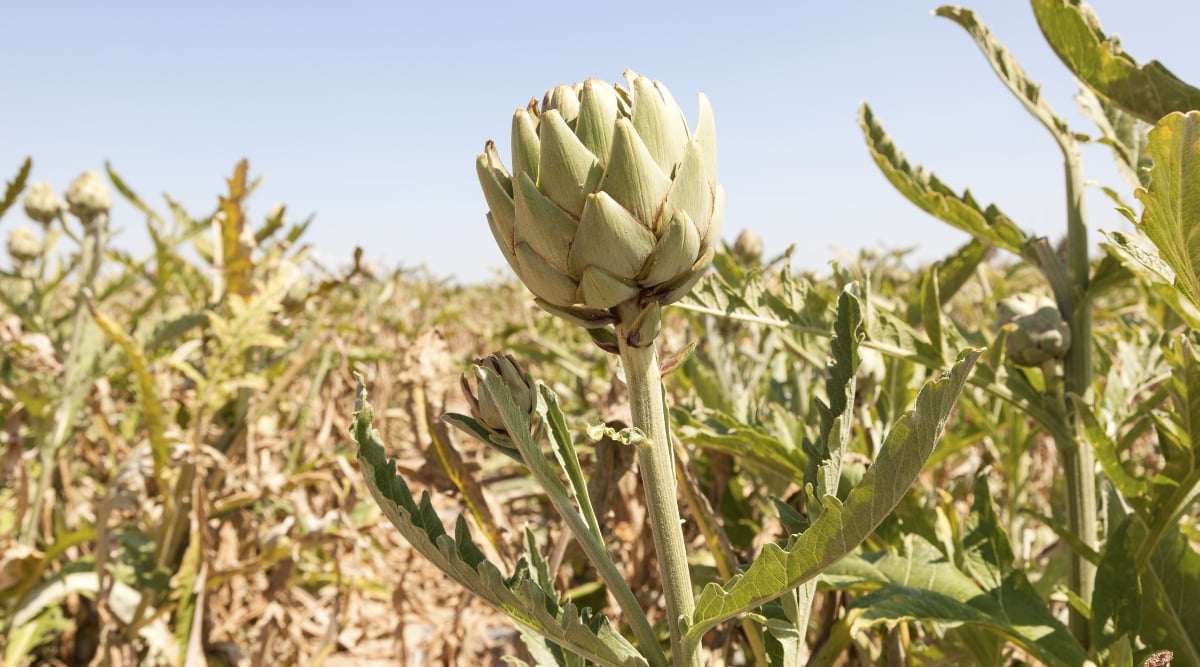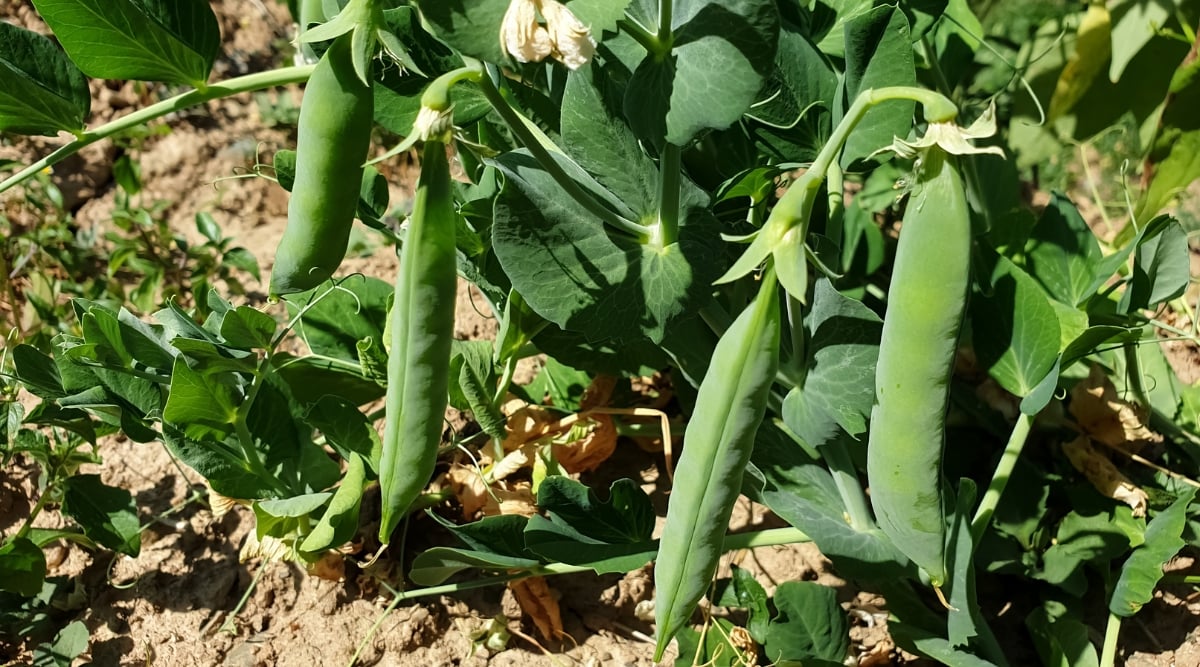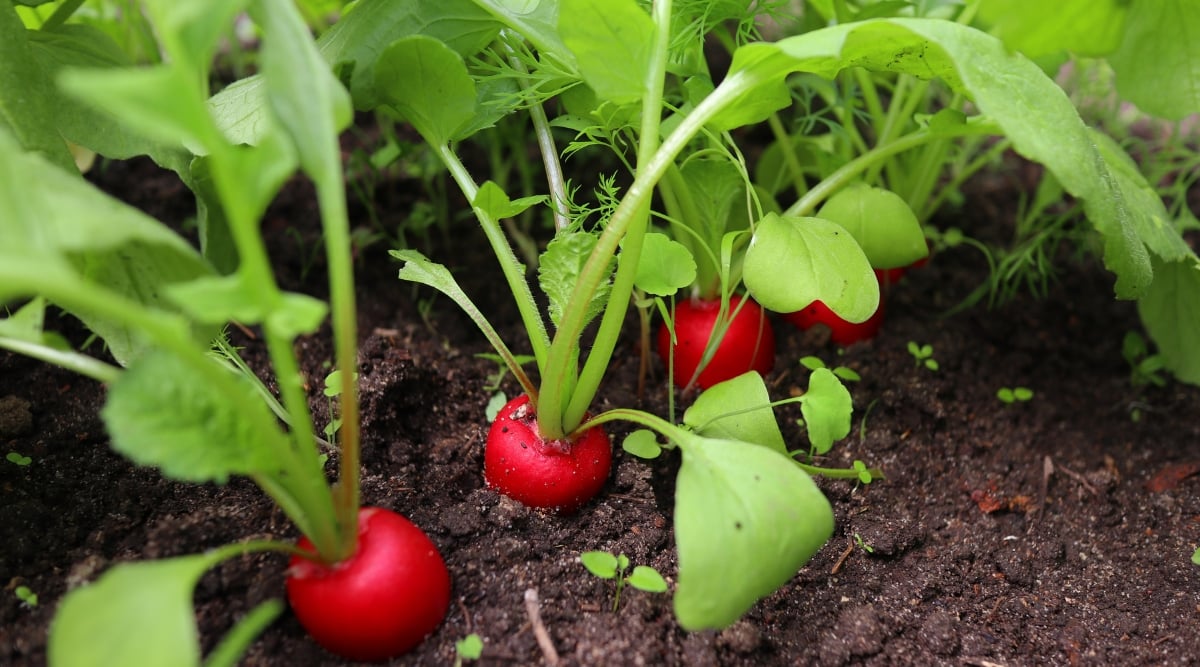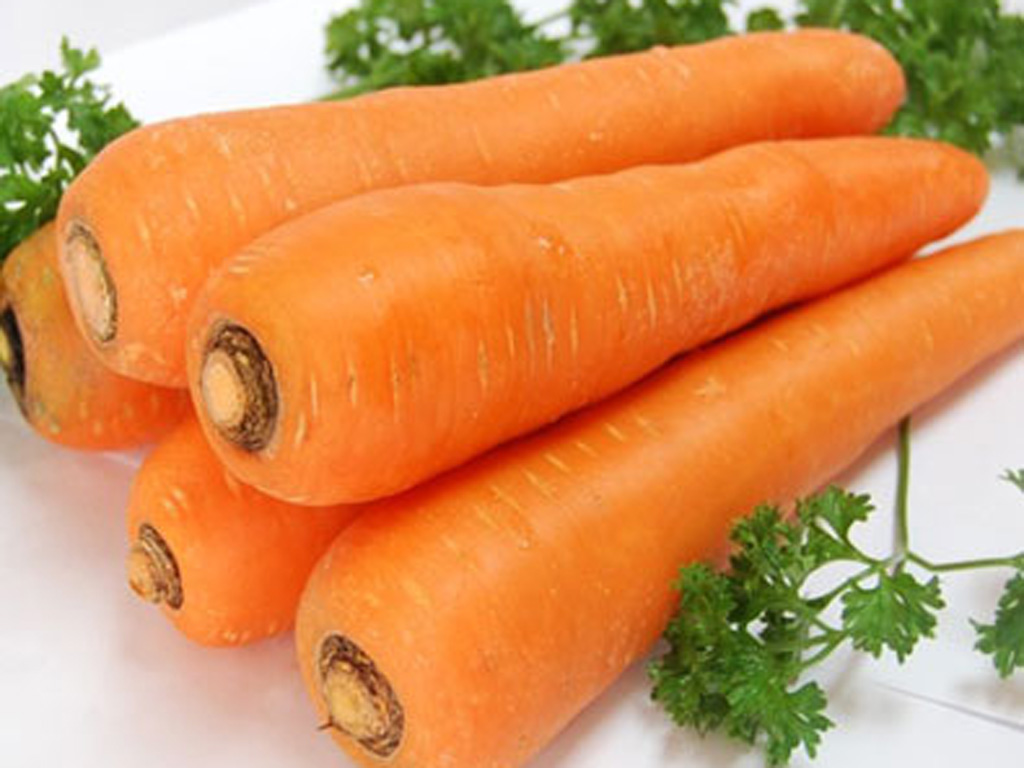15 Companion Crops to Develop with Artichokes
Artichoke vegetation are consideration seekers. They’re going to develop fairly tall and huge, have an interesting-looking flower bud, and bloom into an attractive purple flower that pollinators can’t get enough of. Even if they like being the main target, you probably can develop many companion vegetation with artichokes.
You’ll have to carry spacing in ideas whilst you develop artichokes. The vegetation are huge and will cast pretty a little bit little bit of shade after they’re mature, in order that you need to be cautious of shading out completely different vegetation. Even so, there are a variety of good selections you probably can choose from, and many of them will pair correctly on the plate.
Let’s leap into companion planting and which vegetation will develop with artichokes so you’ll be able to do most likely probably the most in your yard. Proper right here, we’ll share 15 companion vegetation that develop correctly with artichokes!
What’s Companion Planting?


Companion planting is whilst you plant utterly completely different plant species collectively in a yard to permit them to revenue each other. Crops have pest and sickness points, nevertheless some species can repel what ails one different. By placing them collectively, you probably can relieve pest pressures in your yard.
As soon as you propose out your yard to ensure all of the issues works collectively, it will probably prevent a number of sources. You might save time, space, and money on pest administration.
Three Sisters Method


Primarily probably the most well-known occasion of companion planting is the Three Sisters methodology. Corn, beans, and squash are all planted collectively and help each other out. Corn presents a trellis upon which climbing beans can develop, beans current nitrogen, and squash turns right into a dwelling flooring cowl to take care of the soil moist.
Whereas the Three Sisters methodology would not work with artichokes, it’s occasion of how companion vegetation reside harmoniously with each other and revenue their neighbors.
Artichokes as Companion Crops
Even if artichokes demand a number of space, you probably can plant completely different vegetation shut by with a little bit of planning. Sooner than choosing your pairs, it is good to know the nice and the damaging artichokes have as a neighbor.
Benefits


Artichokes are perennial vegetation in USDA zones 7-11. You probably can maintain them in your yard and permit them to return yearly for about six years sooner than they stop producing flowers. Artichokes are a wide selection in the event you occur to reside in a warmth zone and like to take care of your vegetation for a while.
Entice Pollinators


Do you have to allow just a few of your artichokes to bloom, you’ll see the distinctive wonderful thing about the thistle-like flowers. They develop to be vibrant purple and bloom from the center of the bud. The artichoke is not edible when it flowers. You may even see the flowers in an artichoke sooner than it blooms as a result of the inedible fuzz on the guts of the artichoke’s coronary coronary heart.
Although the plant is inedible as quickly because it blooms, you’ll have many pollinators. Bees, butterflies, and completely different critters love the big purple thistle blooms. These pollinators are useful to the ecosystem of the yard.
Container Crops


Artichokes make good container vegetation, making them versatile to work with. If space is a matter in your yard, maintain artichokes in a container near their companions.
They obtained’t get the soil benefits from some companion plant species, nevertheless they are going to nonetheless revenue from pollinators and completely different vegetation that can repel or draw away pests. Merely make sure that when planting artichokes in containers, the pots are huge enough and have enough soil to accommodate the massive root system the plant produces.
Disadvantages
Though planting artichokes inside the yard has many advantages, there are some issues to consider. There are points to plan spherical, akin to how huge they are going to get, how lots water they need, and deterring the pests they entice.
Home


Artichokes take up a number of room. They’re going to attain as a lot as 4 toes tall and huge, which might prohibit what you probably can plant with them when you’ve restricted flooring space.
As talked about above, you probably can plant artichokes in containers. This fashion, you probably can switch them after they get too huge for the yard, and your vegetation nonetheless get the benefits.
Water Requirements


Artichokes may very well be powerful to maintain in dry areas on account of they require lots water. They’re heavy feeders and want continually moist soil. Counting on the local weather, a deep watering 2-3 events each week is true.
By way of the height of summer season, you’ll have to water them further sometimes to take care of them comfy. Drip irrigation is perhaps your most interesting buddy in scorching circumstances!
Pests


There are pretty just some pests and illnesses that will purpose your artichokes. They’re not basically further weak to points, nevertheless having further attainable factors raises the overall hazard.
Regulate your vegetation and pay attention to what pests their companions address so you might make plans to scale back their unfold. Prevention is manner less complicated than dealing with an infestation!
Companion Crops for Artichokes
Let’s try some companion vegetation that develop correctly with artichokes.
Arugula


Arugula needs full photo voltaic in cool local weather nevertheless welcomes shade as a result of the local weather warms up, making it companion for artichokes. The shallow root system obtained’t compete with artichoke roots, and in addition you’ll seemingly harvest the arugula sooner than the two have a chance to have points.
Arugula attracts hoverflies when it flowers, and hoverflies eat the aphids that wish to concentrate on artichokes. Depart some arugula behind to let nature work its magic and help maintain your aphid inhabitants down.
Asparagus


Asparagus is a perennial plant that will take a minimal of two years to develop sooner than you probably can harvest from it. Since artichokes are perennials in warmth climates, you probably can plant these two shut to at least one one other and permit them to get cosy for a while.
Asparagus may very well be harvested from late spring to early summer season, and artichokes are harvested in spring and fall. Nonetheless, it’s most interesting if these two are spaced a bit apart; via the off-season for asparagus, it locations up tall, fern-like fronds. Take into consideration alternating rows of artichokes and asparagus when you’ve lots of room, with just a few toes between them; you’ll get yearly harvests from every and will have an incredible perennial vegetable yard which means.
Plant your asparagus a minimal of two toes away from artichokes. They share the similar root depth and may compete for underground space. Proper spacing will assure every vegetation have ample space to stretch their toes out!
Borage


Borage is a good herb to take care of in your yard for pest administration capabilities. Since artichokes are generally plagued with aphids, spider mites, and whiteflies, you’ll want to plant borage shut by. It would entice predatory bugs like parasitic wasps and hoverflies that will eat the bugs bugging your artichokes.
Borage doesn’t need as lots water as artichokes and is content material materials to dry out between waterings. Plant it on the sting of your artichoke mattress the place the soil dries out sooner, or maintain it in containers shut by so that you probably can larger administration how lots water it receives.
Cabbage


Cabbage (and completely different Brassica kinfolk) makes an incredible companion plant on account of they’ve associated requirements to artichokes. Every vegetation are heavy feeders and great thirsty—you’ll must water and fertilize these vegetation slightly lots. Nevertheless caring for them obtained’t be too powerful in the event you occur to’re rising them collectively.
Artichoke and cabbage leaves will compete for space since they’re every huge vegetation. You’ll need to determine on an enormous mattress to develop these collectively, in any other case you’ll hazard having stunted vegetation.
Calendula


Calendula is one different good flower to take care of spherical for pollinator benefits. It attracts hoverflies, bees, butterflies, and many completely different good bugs to help pollinate your yard and maintain pest populations down.
Calendula attracts a variety of pests, nevertheless you must use it to your profit and take care of calendula as a lure crop. Many pests that have the benefit of artichokes moreover like calendula, along with aphids, whiteflies, spider mites, flea beetles, and slugs. You probably can each allow the pests to eat up the calendula or take away the vegetation as quickly as they’ve bugs and slugs all through them.
Corn


Artichokes thrive in warmth local weather in spring and fall, and summer season typically is a bit lots for them in scorching climates. If this looks as if your situation, you probably can plant corn to the west of your artichokes to supply them some shade when the afternoon photo voltaic hits. The corn must be tall enough to supply the artichokes shade by the purpose the temperatures warmth up.
You probably can put some space between corn and artichokes since shade is the primary benefit of this companionship. Nevertheless the vegetation have utterly completely different root depths, so within the occasion that they should be in shut quarters, they obtained’t compete for water or nutritional vitamins.
Kale


Kale typically is an effective companion to artichokes on account of they’ve the similar care requirements. They every need a great deal of water and daylight all via the cool seasons. Kale moreover benefits from the shade as a result of the local weather will get scorching, so in case your artichokes are at most peak, kale can tolerate a little bit of extra shade via the afternoon hours.
These two vegetation share a variety of pests, so you have to to maintain on excessive of pest administration to cease huge outbreaks. Aphids, cabbage worms, and cabbage moths are just some bugs that will have the benefit of munching on every vegetation. Protect a watchful eye out for these pest bugs!
Onions


Speaking of pests, onions would possibly assist deter aphids, cabbage loopers, flea beetles, and completely different pests. They’re crop to plant spherical artichokes on account of they are going to reduce pest populations since bugs can’t stand their stench.
Onions develop most interesting when watered a minimal of as quickly as each week and with full photo voltaic. They’re going to tolerate partial shade, nevertheless they obtained’t develop giant bulbs. Ought to you possibly can’t get them to be comfy subsequent to your artichokes, develop them in containers and maintain them shut by.
Peas


Artichokes are heavy feeders and want a great deal of nitrogen to develop their huge leaves. Peas will help add nitrogen to the soil over time, in order that they’re good to plant along with artichokes yearly. You probably can alternate rows of peas and artichokes to help distribute nitrogen all via the mattress, nevertheless make certain your vegetation all have a great deal of daylight.
Do you have to plant artichokes as an annual, plant peas sooner than your artichokes. When it’s time to take the peas out, depart their roots inside the soil to interrupt down and launch nitrogen inside the soil later when the artichokes need it.
Since peas revenue the soil, you probably can’t put them in a container such as you probably can with completely different artichoke companions. Fortunately, as well as they like a number of water, and their shallow roots obtained’t inhibit your artichokes. Ensure that the peas don’t wrap throughout the artichokes and choke them out.
Radishes


Radishes are a simple crop you probably can plant almost wherever. They need daylight in spring nevertheless welcome partial shade as a result of the temperatures warmth up. You probably can plant them partially beneath artichoke leaves within the occasion that they get dappled daylight all via the day. Their shallow taproot obtained’t intrude with artichokes.
Radishes are one different good lure crop for aphids. Let the aphids have a buffet on radish greens, and whilst you harvest your radishes, take all the aphids with you and remove them. This will allow you to scale back the aphid inhabitants.
Rutabaga


Rutabagas are an incredible neutral companion for artichokes. They don’t basically ship benefits, nevertheless they don’t set off any factors, each. They develop among the best when planted in fall nevertheless might also develop as a spring crop.
Rutabagas select full photo voltaic nevertheless can tolerate partial shade, so it obtained’t be the worst issue within the occasion that they end up being barely shaded by artichokes. It moreover enjoys continually moist soil, so watering shouldn’t be powerful to take care of between the two.
Sunflowers


Sunflowers are one different crop to protect artichokes from the summer season photo voltaic. Plant them on the west aspect of your yard to offer the sunflowers all the photo voltaic they are going to get whereas the artichokes cool down a bit via the afternoon’s heat.
You’ll want space between these vegetation since sunflowers don’t need as lots water on account of their deep taproots. They’re drought-tolerant and will dry out between waterings, so they could turn into waterlogged in the event you occur to carry them on the similar schedule as artichokes.
Tarragon


Tarragon brings many benefits to the yard that your artichokes will definitely revenue from. They entice predatory bugs like ladybugs and hoverflies that will feast on pests. On excessive of that, the plant repels many pests, so that you just shouldn’t have many bugs spherical.
Tarragon is perhaps happiest when planted on the perimeters of the artichoke mattress, the place it’s going to probably nonetheless get daylight. It’s drought-resistant and must be allowed to dry out a little bit of between waterings. It’s not a heavy feeder and obtained’t compete with artichokes.
Thyme


Thyme is one different drought-tolerant herb that will help battle off pests. It would deter cabbage loopers, cabbage worms, and snails, which may very well be huge points for artichokes. Thyme is usually harvested in early summer season, which might align alongside together with your artichoke harvest.
As I actually helpful with tarragon, this herb is perhaps happiest in drier circumstances. You may want to maintain it in a container subsequent to your artichoke mattress to help hold an accurate watering schedule.
Yarrow


If artichoke plume moths are a problem in your yard, try planting some yarrow to get it beneath administration. Yarrow attracts a variety of predatory bugs, along with parasitic wasps that kill plume moths. It moreover attracts lacewings and ladybugs that will eat aphids.
This beneficial plant should be watered solely when the soil is dry, so maintain this plant in a separate mattress or container, as a result of the moist circumstances of the artichoke mattress will seemingly make yarrow unhappy. You’ll must water it further sometimes within the summertime as a result of the soil will dry out sooner.
Final Concepts
Artichokes are eye-catching vegetation which is perhaps fulfilling to develop, whether or not or not you want to eat them or have the benefit of their pretty blooms. Even if they are going to take up a number of space, there are quite a few vegetation you probably can plant near your artichokes to behave as useful, useful companions inside the yard.







